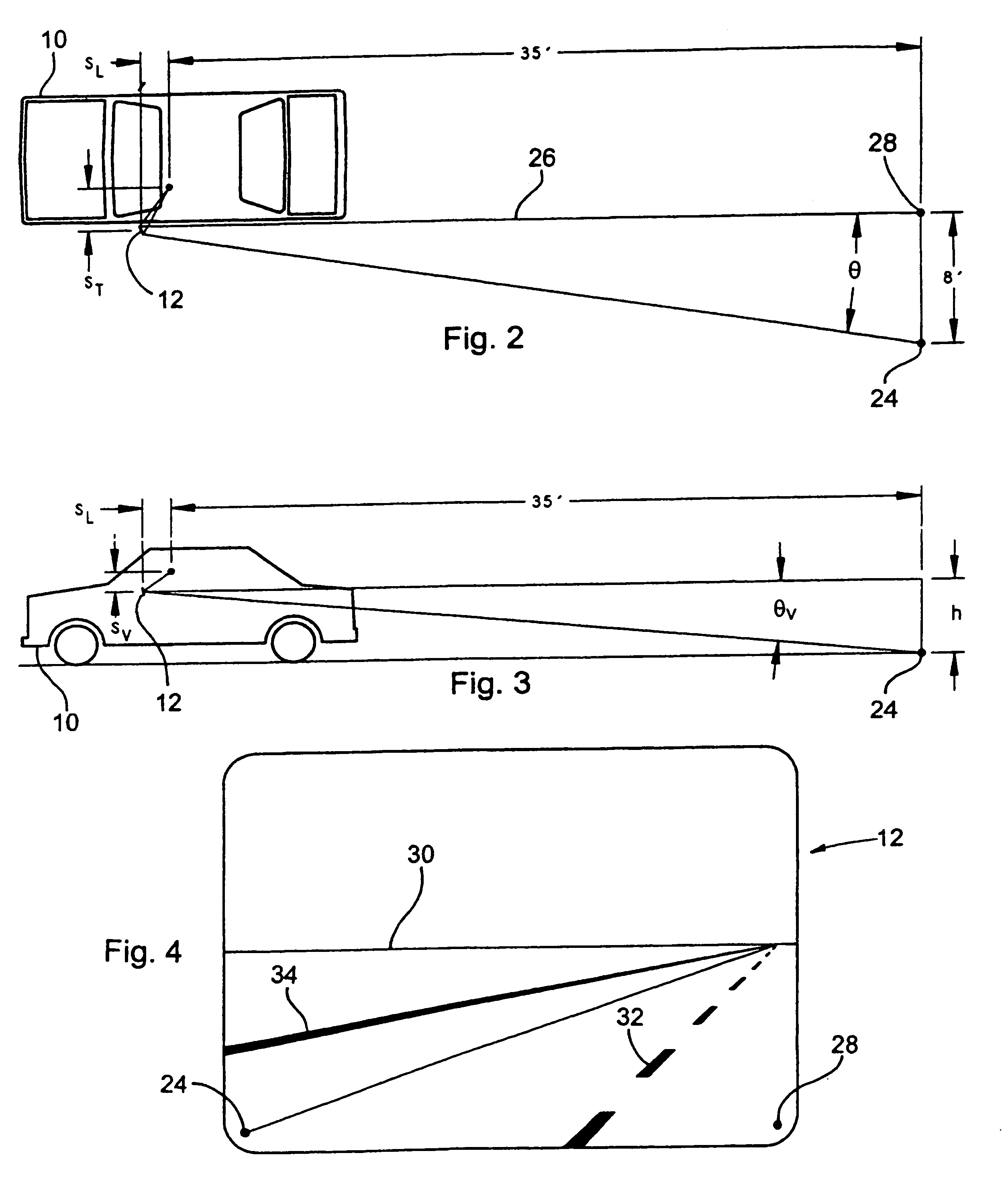Compound automotive rearview mirror
a rearview mirror and composite technology, applied in the field of mirrors, can solve the problems of insufficient adjacent lane visibility of the fmvss 111, insufficient glance over the shoulder, and inability to view adjacent lanes,
- Summary
- Abstract
- Description
- Claims
- Application Information
AI Technical Summary
Benefits of technology
Problems solved by technology
Method used
Image
Examples
Embodiment Construction
)
[0056]As required, detailed embodiments of the present invention are disclosed herein. However, it is to be understood that the disclosed embodiments are merely exemplary of an invention that may be embodied in various and alternative forms. Therefore, specific functional details disclosed herein are not to be interpreted as limiting, but merely as a representative basis for the claims and / or as a representative basis for teaching one skilled in the art to variously employ the present invention.
[0057]Referring now in greater detail to the drawings, FIG. 1 shows a mid-sized passenger car 10 in the middle lane of a three-lane highway with 12-foot wide lanes. The vehicle 10 is equipped with a driver's side outside mirror 12. The driver's eyes are shown centered at point 14, from which the driver has a field of view to the rear in the horizontal plane encompassing the acute angle formed by lines 16 and 18. Line 20 defines the rearward limit of the driver's peripheral vision when lookin...
PUM
 Login to View More
Login to View More Abstract
Description
Claims
Application Information
 Login to View More
Login to View More - R&D
- Intellectual Property
- Life Sciences
- Materials
- Tech Scout
- Unparalleled Data Quality
- Higher Quality Content
- 60% Fewer Hallucinations
Browse by: Latest US Patents, China's latest patents, Technical Efficacy Thesaurus, Application Domain, Technology Topic, Popular Technical Reports.
© 2025 PatSnap. All rights reserved.Legal|Privacy policy|Modern Slavery Act Transparency Statement|Sitemap|About US| Contact US: help@patsnap.com



